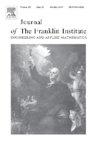A robust watermarking scheme against cut-and-paste attacks based on polar harmonic transform and differential grid verification
IF 4.2
3区 计算机科学
Q2 AUTOMATION & CONTROL SYSTEMS
Journal of The Franklin Institute-engineering and Applied Mathematics
Pub Date : 2025-08-06
DOI:10.1016/j.jfranklin.2025.107952
引用次数: 0
Abstract
Digital watermarking technology is a reliable method of copyright protection. However, with the continuous advancement of multimedia technology, a new type of cut-and-paste attack increasingly threatens the copyright security of images. To solve this problem, this paper proposes a robust watermark self-restoration scheme based on polar harmonic transform (PHT) and differential grid verification (DGV) to enhance the robustness of watermarking under cut-and-paste attacks. Specifically, standard distortion-compensated quantization index modulation (DC-QIM) is used to embed the watermark into PHT moments, which ensures the robustness of the watermark against common attacks. Two watermark extraction strategies, regular extraction and sliding window extraction, are designed to provide the watermark with strong extraction capability even when it suffers from translation and cut-and-paste attacks. In order to make the watermark with self-restoration ability, the proposed scheme adopts m-sequence to encode the watermark and realizes the self-restoration of the watermark by m-sequence based DGV during the extraction process. The experimental results show that the watermarking scheme maintains good imperceptibility while significantly outperforming similar schemes in terms of robustness against most types of attacks, especially cropping and translation attacks, and also has the ability to resist cut-and-paste attacks.
一种基于极调和变换和差分网格验证的抗剪切粘贴攻击的鲁棒水印方案
数字水印技术是一种可靠的版权保护方法。然而,随着多媒体技术的不断进步,一种新型的剪切粘贴攻击日益威胁着图像的版权安全。为了解决这一问题,本文提出了一种基于极调和变换(PHT)和差分网格验证(DGV)的鲁棒水印自恢复方案,以增强水印在剪切粘贴攻击下的鲁棒性。具体来说,采用标准失真补偿量化指标调制(DC-QIM)将水印嵌入到PHT矩中,保证了水印对常见攻击的鲁棒性。设计了规则提取和滑动窗口提取两种水印提取策略,使水印在遭受翻译和剪切粘贴攻击时仍具有较强的提取能力。为了使水印具有自恢复能力,该方案采用m序列对水印进行编码,并在提取过程中利用基于m序列的DGV实现水印的自恢复。实验结果表明,该水印方案在保持良好的不可感知性的同时,对大多数类型的攻击,特别是裁剪和平移攻击的鲁棒性显著优于同类方案,并且具有抵抗剪切粘贴攻击的能力。
本文章由计算机程序翻译,如有差异,请以英文原文为准。
求助全文
约1分钟内获得全文
求助全文
来源期刊
CiteScore
7.30
自引率
14.60%
发文量
586
审稿时长
6.9 months
期刊介绍:
The Journal of The Franklin Institute has an established reputation for publishing high-quality papers in the field of engineering and applied mathematics. Its current focus is on control systems, complex networks and dynamic systems, signal processing and communications and their applications. All submitted papers are peer-reviewed. The Journal will publish original research papers and research review papers of substance. Papers and special focus issues are judged upon possible lasting value, which has been and continues to be the strength of the Journal of The Franklin Institute.

 求助内容:
求助内容: 应助结果提醒方式:
应助结果提醒方式:


